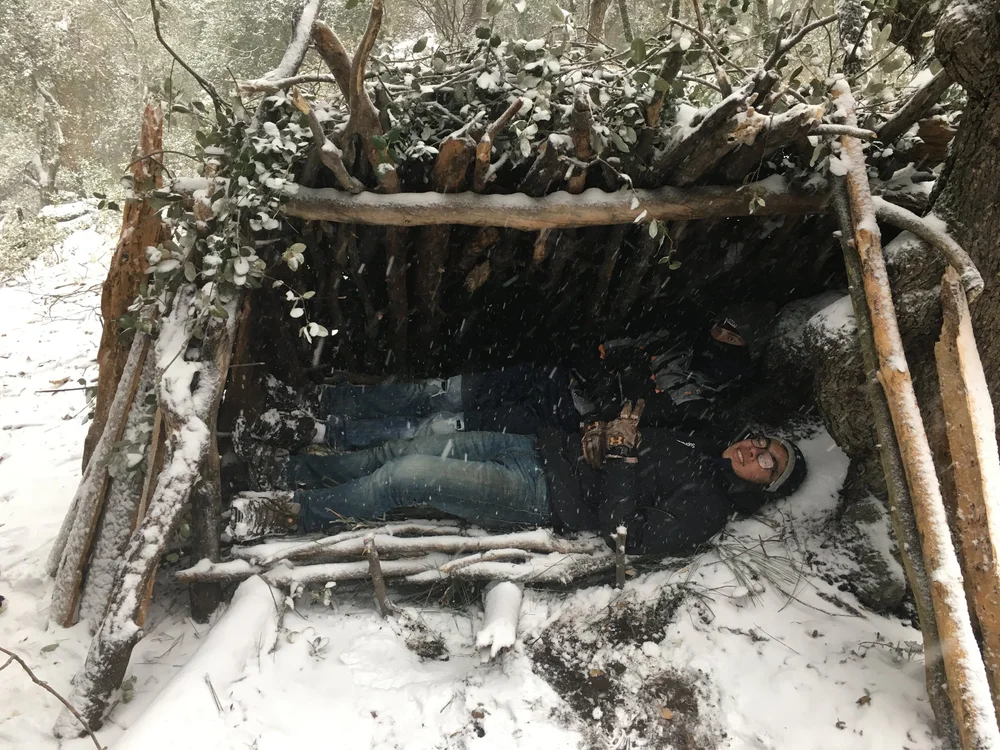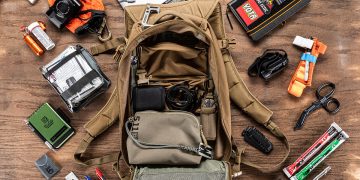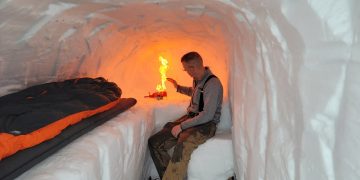In wilderness survival, where every moment could make the difference between life and death, prioritizing resources is critical. When stranded in the wild, the two most essential needs are food and water. But which one should you focus on first? The age-old question often arises: Is water collection more crucial than food in wilderness survival?
The answer, though nuanced, tilts heavily toward water. In this article, we will explore why water is the lifeblood of survival, why it outweighs food in the initial stages of being lost in the wild, and how understanding this concept can potentially save your life.
The Anatomy of Survival: Food vs. Water
Before diving into the specific reasons why water may be more important than food, it’s essential to understand the biological basics that drive survival priorities.
Water makes up around 60% of the human body. It is involved in almost every bodily function, including temperature regulation, nutrient transportation, and waste removal. Without it, the body cannot function properly for extended periods. Dehydration begins to set in after just a few hours of water deprivation.
Food, on the other hand, provides energy and nutrients necessary for growth, repair, and regular bodily functions. However, the human body can survive without food for weeks (depending on individual health and environmental factors) as long as it is adequately hydrated.
Thus, in terms of immediate survival, water becomes more essential because the body can manage without food for longer than it can manage without water.
Why Water is More Crucial Than Food
1. Dehydration Can Kill You Faster

Water is vital for maintaining body temperature, transporting nutrients, and eliminating waste. In an emergency situation, dehydration sets in rapidly. After only 24 to 48 hours without water, you begin to experience the severe effects of dehydration, which can include dizziness, confusion, kidney failure, and even death.
In contrast, you could go for several weeks without food, provided you stay hydrated. The human body can tap into fat reserves and break them down for energy. However, dehydration compromises these vital processes, and it’s much harder to endure.
2. The Body’s Water Needs Are Non-Negotiable
Every system in your body depends on water. Without it, the following processes are affected almost immediately:
- Cell function becomes impaired as cells rely on water for nutrient uptake and waste disposal.
- Circulation becomes sluggish, which impairs oxygen and nutrient transport.
- Temperature regulation is severely hindered because the body’s ability to sweat and cool itself down depends on water.
Without adequate hydration, the human body will begin to shut down its non-vital systems. The longer you go without water, the faster this cascade of failures accelerates. Food, while necessary for energy, is not as immediately critical in sustaining these essential bodily functions.
3. Water is More Accessible Than Food in the Wilderness
In a survival scenario, finding water is typically easier than finding food. Water sources such as streams, rivers, rain, or even dew on plants are often within reach, even in arid environments. Many survivalists know techniques for purifying natural water sources, such as boiling, filtering, or using chemical purifiers.
Food, on the other hand, can be difficult to come by, especially in areas where plant and animal life is sparse or where the local ecosystem doesn’t provide easy sources of sustenance. Hunting and trapping require specialized knowledge and skills, and not all wilderness areas have an abundance of edible plants or animals.
So, even if food is more readily available in some environments, there is always the risk that it could take longer to procure, and the body can last longer without it than without water.
4. Hypothermia and Heatstroke: Water’s Role in Temperature Regulation
Water’s role in regulating body temperature is an often-overlooked but vital factor in wilderness survival. The body relies on water to maintain a stable internal temperature. Without adequate hydration, the body becomes less effective at sweating to cool down in hot climates, and its ability to conserve heat in cold environments diminishes.
In extreme cold, hypothermia can set in rapidly when the body loses too much heat and can’t retain enough warmth. In hot environments, dehydration increases the risk of heat exhaustion or heatstroke, which can be fatal if not addressed swiftly. Both conditions are life-threatening and directly tied to the availability of water.
5. The ‘Will to Live’ vs. ‘Will to Eat’
Psychologically speaking, the drive to drink water is stronger than the drive to find food. Studies have shown that people in survival situations often experience an overwhelming urge to find water first. This primal instinct kicks in long before hunger pangs. The will to survive is stronger when you’re thirsty, which is why most people prioritize water over food in dire circumstances.
How to Collect Water in the Wilderness
Now that we’ve established that water is more essential in the early stages of survival, let’s dive into practical tips for water collection.
1. Locate Natural Water Sources
Streams, rivers, lakes, and ponds are the most obvious natural sources of water. While they might seem readily available, you should always purify any water you collect before drinking. Even clear-looking water can contain harmful microorganisms.

2. Use a Water Filter or Boiling
If you have access to a portable water filter or purification tablets, these can make water safer to drink. Alternatively, boiling water for at least one minute will kill most harmful pathogens.
3. Collect Rainwater
Rainwater is often clean and safe to drink. If you’re caught in a rainstorm, use any container or makeshift tarp to collect the water. If possible, avoid letting rainwater touch the ground, as dirt and bacteria could contaminate it.
4. Dew Collection
In many ecosystems, morning dew can be collected from plants. Simply use a cloth to wipe the dew from plant leaves and wring it into a container. While this may not yield a lot of water, it can be a vital source in a survival situation, especially in dry climates.
5. Create a Solar Still
If no obvious water sources are available, a solar still can help you extract moisture from the ground. You’ll need a plastic sheet, a container, and a small rock. Dig a hole, place the container at the bottom, cover the hole with the plastic sheet, and place the rock in the center to create a slope. As the sun heats the ground, moisture will condense on the underside of the plastic and drip into the container.
Food: When and How to Focus on It
Once you’ve secured a stable water supply, your attention can shift to food. Here’s a quick guide to finding sustenance when you’re no longer critically dehydrated:
1. Forage for Edible Plants
In many forests and wilderness areas, edible plants such as berries, wild greens, and mushrooms can be found. However, identifying these plants is crucial. Poisonous varieties are common, so it’s important to know what you’re looking for.
2. Hunt or Trap Animals
If you’re in a wilderness area with a strong animal population, hunting or trapping small game like squirrels, rabbits, or birds may provide food. Keep in mind that this requires skill and tools, such as snares, traps, or a hunting weapon.
3. Insects: A Survival Food
Insects are a protein-rich and abundant food source in many environments. While eating insects may be off-putting to many, they can be a vital source of nutrients in a wilderness emergency.
Conclusion: The Essential Role of Water in Survival
Water, without a doubt, should be your first priority in a wilderness survival situation. While food is essential for long-term survival, you can survive without it for weeks if you have access to clean, drinkable water. In contrast, without water, you could face life-threatening dehydration in a matter of hours. Understanding this priority could be the difference between life and death when navigating the wilderness.
Survival is about making smart, strategic decisions with the resources available. In the face of uncertainty, knowing that water comes before food will help you focus your efforts where they matter most, ensuring that your body has the strength and endurance to continue the fight for survival.























